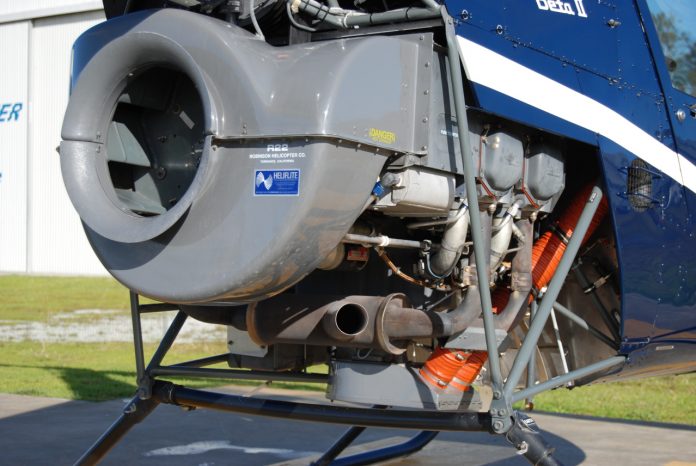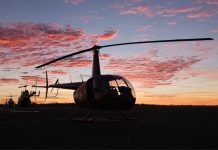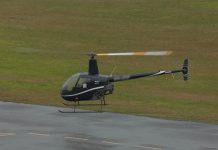A rise in engine problems in piston engine helicopters has triggered CASA’s most recent Airworthiness Bulletin.
AWB 85-024, issued yesterday, applies to all spark ignition aircraft piston engines, but most directly applies to Lycoming O-320, O-360 and O-540 series engines or their fuel injected variants installed in Robinson R22 and R44 helicopters used in northern Australia for helicopter mustering.
‘Industry participants are seeing a significant increase in incidences of premature engine cylinder removals due to exhaust valve and valve guide wear, predominantly affecting Heli Mustering operations across the northern regions of Australia,’ the bulletin says.
‘In several cases cylinder changes have occurred within the first 100 hourly inspection due to failed compression testing.’
The bulletin cautions against leaping to conclusions about what might be causing the problem.
‘It has been widely theorised that changes in avgas grade, has caused the described problem when aircraft operations are conducted in high outside air temperature (OAT) environments. However, at this time it has not been conclusively determined that changes in the fuel composition is the source of the engine problems,’ AWB 85-024 says.
‘A clear understanding of all potential causative factors needs to be established before any solutions can be recommended.’
‘An investigative stakeholder group has been formed with representation from Lycoming as the primary affected engine manufacturer, Viva Energy Australia as the primary fuel supplier and the Australian Helicopter Industry Association, together with a number of prominent affected operators and maintainers in Queensland and the Northern Territory.
The bulletin also says problems are not limited to Lycoming products, as cylinders fitted with parts manufacturer approval (PMA) parts have also failed in similar circumstances, and Continental engines installed in fixed wing aircraft have had similar occurrences.
The bulletin recommends aircraft operators pay stringent attention to fuel storage and handling, maintenance of cooling system baffles, cowls and shrouds, engine fuel flow, ensuring accuracy of engine gauges and operating engines within cylinder head temperature limits.
It suggests borescope analysis, spectrographic oil analysis and digital engine monitoring as ways to detect the problem before it causes a possible in-flight hazard.





Is a dust environment a factor ?
Trust that the lubricant characteristics and .change frequency is not the problem as was the case with some of the old high tech radials
This is not an Australian problem, my R44 based in Czech rep. has the exact same problem. With now 450 hours from new, I have to do the second engine overhaul!
However the cause is crystal clear; the Robertson is a great helicopter, but the cooling air inlet is on the back-side of the aircraft, increase in airspeed decreases air ingestion! Compared to other aircraft, the Robertson engines run very hot, where an engine normally runs 2000 hours, now it is reduced to only 100 to 200 hours.
If the air inlet would face forward, Ram air help to give the engine the extra cooling it needs. And the Lycoming is a great engine, but air-cooling has its limitations, the exhaust valve is a critical point, however an easy to solve problem, simply fit oil-cooling! It is an existing Lycoming modification that works.
But that is not all, in a normal aircraft an engine may run for 2.000 hours, but by this time the cylinder walls are completely wasted, the engine still runs, but can not be considered airworthy. It is considered normal, but it is not!
The cylinder wear is caused by carbon build up on the upper part of the piston crown, carbon mixed with oil forms a extreme hard abrasive layer that destroys the cylinder wall. Carbon however can easy be removed by a carbon scraper ring.
Technically this problem can be solved very easy, but to get it approved, certified, that is going to be the big challenge, who likes to help me?
Suggest you investigate Aeroshell Multigrade W15W-50 Semi-synthetic Ashless Dispersant Engine Oil;
Specifications & Approvals:
• Avco Lycoming 301F (Service Bulletin 1014J & Revisions 446C & 471).
• FAA AD 80-04-03.
As stated in the Engine Maintenance Manual, the engine oil performs a primary function of internal cooling and lubrication, and I fear that the suggested MIL Spec straight 50W(?) oil, especially without an oil cooler, just isn’t up to the task.
The old Wright Cyclone R3350 DA3’s suffered massive engine problems on straight 120W until the US Coast Guard switched to synthetic multi-grade oils on their long range patrol L1049’s.
Trust the above may be of assistance to you.
The Robinson’s do have a large oil cooler. Synthetic oil does not mix with leaded fuel.
The problem is much simpler;
According to Robinson the air pressure in the engine’s plenum is about 5 inches of water, equals about 100 mph. The helicopter cruse flight is about 100 kts, so it is easy to see that the engine gets less air trough the fan than it would get from an air inlet facing forward.
We all know that the Robinsons use less power than the engine can produce, that is only partly true!
The R44 uses 205 hp in cruse flight, that is almost 80% power! That is much more than a a fixed wing would use in cruse flight! The very same engine in my plane, an SF260, would cruse 190 kts @ 80% power!
But the engine gets almost 5 x the air pressure in the plenum compared to the R44! Still we do not fly at 80% to save the engine…. The engines in the Robinsons are severely over-loaded for the cooling air they get!
Is my idea too simple, do I see something wrong here?
Mustering must involve a lot of low speed and high power. This is normal usually only for landing. I guess these operations must put a cooling system to its limits
Simon Bromiley’s comment hits the nail on the head, low forward speed and high power settings are typical operating parameters for mustering type work.
Throw in over boosting (which a lot of these game capture/mustering pilots are guilty of) with down wind and hot/high conditions and the engine will show increased signs of premature wear.